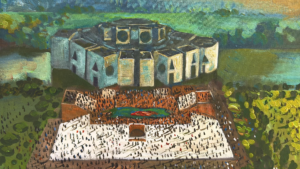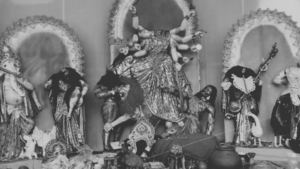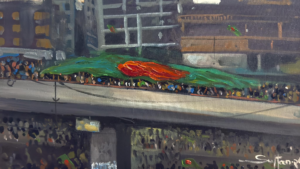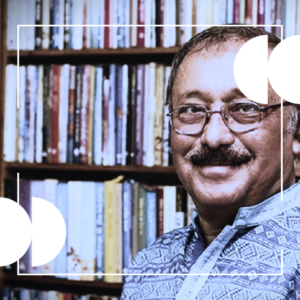
REPORT ON THE 1978-79 BANGLADESH REFUGEE RELIEF OPERATION 1
by Alan C. Lindquist
(Head of UNHCR Sub-office
Cox’s Bazar, Bangladesh,
1978)
June, 1979
I wish to thank the Institute of Development Studies, University of Sussex, England, for the use of its facilities while researching and writing this report.
I also wish to thank Martin Haug (League Delegate from the Swiss Red Cross to the Bangladesh Red Cross Society, December, 1977 to December, 1978) and Jim Clevenger, (Deputy Field Director, Oxfam, Bangladesh from 1977 to January, 1979) assistance with sections of this report. Responsibility for the views expressed here, however, rest solely with me.
In addition, I am grateful to Tim Dyson, Demographer of the Centre for Population Studies of the London School of Hygiene and Tropical Medicine, for his assistance with the demographic statistics.
During the past year the problems of international refugees have received much coverage in the world press -most of it devoted to the Vietnamese “boat people” arriving on the shores of Malaysia and other Southeast Asian nations. Another refugee movement of almost equal magnitude in the area, however, has received little attention: the 200,000 Muslim refugees from Burma in Bangladesh. Some press coverage appeared in May and June, 1978, when tens of thousands of the Muslim minority community were pouring into Bangladesh from neighboring Burma. And the signing of an agreement between the two governments on July 9th, allowing the refugees to return, merited short articles in many papers. But from then on there was virtually no news for six and a half months until January 26, 1979, when the office of the United Nations High Commissioner for Refugees in Geneva announced to the press that since June 1, 1978, more than 10,000 of the Burmese refugees had died in the Bangladesh camps. 2 Between late March and mid-July, 1978, approximately 200,000 of the estimated 1,400,000 Bengali Muslims (called Rohingyas) living in the state of Arakan in north-western Burma fled into nearby Bangladesh. The roots of this mass exodus can evidently be traced to increased immigration from Bangladesh in recent years into this isolated area somewhat tenuously controlled by the central government of the Union of Burma, and to the apparent growth of a movement for the autonomy or independence of the Arakan among both the Buddhists and the Muslims of the area. While some of the Buddhist community wanted independence for the Arakan state, they were also afraid of absorption into Bangladesh.
What apparently triggered the flight of the refugees into Bangladesh was the combined operation of the Burmese army and administration to crush the independence movement and to conduct the first census in the area since 1962. The heavy-handed methods of the police and soldiers carrying out these operations, and their exploitation of the opportunities for extortion inherent in a situation where some people lacked documentary proof of their right to reside in Burma, accompanied by an upsurge in violent clashes between the two communities, created a climate of fear. News or rumours of beatings, abductions, and killing of Muslim men, and of the rape of Muslim women, spread from village to village, and many Muslim families were spurred into flight.
There is no doubt that a number of atrocities did occur, but whether or not the fears were justified in terms of the real threat the Muslims faced from either the Burmese authorities or their Buddhist neighbors,200,000 people believed they were in sufficient peril to pack up what possessions they could carry and trek for up to 100 miles to reach the relative safety of Bangladesh.
As the refugees poured into southern Bangladesh, 12 camps were established by the Government of Bangladesh along the road connecting Teknaf at the southern tip of Bangladesh, and Cox’s Bazar, the commercial and administrative centre of the area, 50 miles to the north. A 13th camp was located some distance to the northeast, in the Chittagong Hill Tracts. Officials from different government departments all over the country were deputed to administer the camps. These “magistrates”, as they were called, were responsible for the registration of refugees, for the maintenance of law and order in the camps, and for the distribution of relief supplies.
The Government of Bangladesh appealed to the United Nations for assistance in May, when the number of refugees had reached 150,000. The U.N. Secretary-General designated the United Nations High Commissioner for Refugees (UNHCR) as coordinator of U.N. assistance. The High Commissioner (Poul Hartling, former Liberal Prime Minister of Denmark), who had no permanent representative in Bangladesh, appointed the United Nations Development Programme (UNDP) Resident Representative in Dacca, Bernard Zagorin, as the Special Representative of UNHCR, and then deputed an experienced UNHCR officer, Roman Kohaut, to Bangladesh as Chief of Field Operations.
The High Commissioner also issued an appeal on May 29 for $15,565,000 in cash or kind to cover assistance to the refugees through 31 December 1978. As of 30 September that year, a total of 12 governments and the EEC, 6 non-governmental organisations, as well as UNICEF and WFP, had made confirmed contributions of over $7.6 million in cash and over $6.7 in kind. In addition to this total of $14.3 million, UNHCR was informed of bi-lateral aid for the refugees valued at more than $12.7 million. 3 that there were stocks of various commodities in the country which, against reimbursement, could be diverted to help refugees. Similarly, much needed transport equipment could be borrowed from organizations such as UNDP and UNICEF. The implementation of the programme could thus get off to a fast start.”]
The Government of Bangladesh, with U.N. assent, established a basic daily food ration for adults consisting of 200 grams of wheat flour, 200 grams of rice, 40 grams of fish protein concentrate (“FPC”), 30 grams of vegetable oil, 10 grams of sugar, 10 grams of salt, and 2 grams of tea. The caloric value of this ration was estimated to be 1,910 cals. Children under 12 years were to get half that. This ration was to be distributed on a weekly basis by the camp administration to housing unit leaders (majhis) who would then pass it out to the individual families.
More than 2,300 communal shelters or “sheds” were constructed by the refugees with bamboo and plastic sheeting provided to them. The Bangladesh Government’s Department of Public Health Engineering sank nearly 700 tube wells for drinking water in the camps and dug several times that number of trench and pit latrines.
The Bangladesh Red Cross Society (BRCS) set up medical clinics in each of the camps staffed by student doctors and nurses to supplement the government health centres. It also established “vulnerable group” feeding centres in June where children under 12 years old, expectant and breast-feeding mothers, and old people over 65 years could obtain one hot cooked meal per day of mixed rice and lentils, containing perhaps 600 calories. At least 55 per cent of the population fell into the “vulnerable” category.
Despite all this assistance, however, by July it had become apparent that all was not well in the relief operation. Based on official Government of Bangladesh figures, the death rate in the refugee camps during the first part of June was running at about seven per 10,000 per week or 4 percent per year. This was already twice the average for Bangladesh as a whole, but is perhaps not so surprising given the hardships suffered by the refugees while making their way to the camps. By the end of July, however, the camp death rate had shot up to 17 per 10,000 per week, corresponding to an annual death rate of 9 percent, four and a half times the Bangladesh average! Four months later, by the week of 26 November to 3 December, when the refugees had been settled in the camps for periods ranging from four to six months, mortality had reached the appalling height of 17 per cent per annum (33 per 10,000 population per week) – eight and a half times the Bangladesh average! Even during the Sahel famine in Africa in the 1970s and the localised Bangladesh famines of 1972 and 1974, the death rates for the affected areas had never exceeded twice the normal rates. Between 80 and 85 people (perhaps 70 percent of them children) were dying every day in the Bangladesh camps, and approximately 7,500 total had died in just half a year. At the end of January 1979, UNHCR announced in Geneva that 10,000 refugees had died. By the end of March the toll had climbed to 12,000.
Yet during most of that period, more than 90 percent of the refugees had been settled in easily accessible camps near a reasonable all-weather road within 150 miles of Bangladesh’s major seaport, Chittagong, and under close government supervision. They were not widely dispersed, as in the Sahel famine, and no war interrupted the food distribution, as in Biafra. International organisations — in particular UNHCR and the League of Red Cross Societies, both with considerable experience in similar situations — were involved almost from the first influx of refugees. Ample supplies of food and money to meet the needs of the refugees had been pledged by the international community, and the Government of Bangladesh had sufficient buffer stocks from which to draw until pledged commodities arrived. No world food shortage existed as during the Bangladesh famine of 1974.
So why did so many people die? 4
The answer to that stark question lies squarely in the arena of politics. The objective of the Bangladesh Government from the beginning was that the refugees should go back to Burma as quickly as possible, whatever they might feel about it. The Government of Bangladesh was able to get an agreement from the Burmese Government in early July providing that those refugees whom Burma recognised as genuine residents would be able to return. The next step was to convince the refugees, who were at best very reluctant, and to this end the Bangladesh Government was prepared to go to considerable lengths, and ultimately, it seemed, to use force if necessary. The fact that the refugees were culturally similar to the majority of the Bangladesh population (unlike in many other refugee situations) did not soften the government’s attitude. On July 12, 1978 a refugee relief coordination committee meeting chaired by the Secretary of the Ministry of Relief and Rehabilitation, Syed All Khasru, was held in his spacious Dacca office. Top-level representatives of most of the government departments and U.N. agencies concerned with the refugee relief operations attended the meeting. In a discussion on whether the refugee food ration was adequate, Secretary Khasru – a former police security intelligence officer – said, “Well , gentlemen, it is all very well to have fat, well-fed refugees. But I must be a politician, and we are not going to make the refugees so comfortable that they won’t go back to Burma.” 5
That statement effectively ended the discussion. None of the U.N. agency heads raised any objection to using food as a political weapon. The Bangladesh Government was not going to make the refugees “comfortable.” It was going to keep the pressure on them until they went back.
It is doubtful that the government had a conscious policy at this time to starve out the refugees. But anyone with a knowledge of how things actually work at the implementation level in rural Bangladesh should have realised what dangerous folly it was for officials to think they could sit in Dacca offices and “fine-tune” the food ration to the point where all refugees had enough to survive on but not so much that they were “comfortable.”
Given the “slippages” (due to both inefficiency and corruption) that almost invariably occur by the time a quantity of food gets distributed to a refugee family, and the virtually inevitable inequalities in distribution between refugees, keeping the ration at an absolute minimum was bound to drive the weakest of the refugees (usually the children) over the line of existence. And so it happened. Children died literally by the thousands, including hundreds in the first month of the U.N.-declared “International Year of the Child,” 1979.
History of the relief operation
The original daily food ration for adult refugees established by the Government of Bangladesh in May, 1978 — mentioned above — was rated at the following caloric values:
| Foodstuff | Quantity | Caloric Value |
|---|---|---|
| wheat flour | 200 grams | 720 Kilo calories |
| rice | 200 grams | 720 Kilo calories |
| fish protein con- centrate (FPC) | 40 grams | 160 Kilo calories |
| vegetable oil | 30 grams | 270 Kilo calories |
| sugar | 10 grams | 40 Kilo calories |
| salt | 10 grams | --- |
| tea | 2 grams | --- |
| Total... | 1,910 Kilo calories | |
UNHCR, despite its extensive experience in refugee operations over a period of more than 25 years, did not have a single nutritionist on its staff, neither in Geneva Headquarters nor in any regional or field office. In Bangladesh, however, there was an experienced U.N. nutritionist already on hand working with the U.N. Food and Agriculture Organisation (FAO), Norwegian Dr. Cato Aall. 6 At the time the refugees began to come into Bangladesh, Dr. Aall was working with a team of young Bengalis he had trained on a project to introduce the consumption of fish protein concentrate as nutritional supplement in the country. He quickly devoted himself and most of his team to the nutritional needs of the refugees.
Dr. Aall wrote a number of excellent nutritional situation reports which were distributed to all U.N. agencies and government departments concerned. These clearly spelled out the food requirements of the refugees, warned of the consequences of not meeting them, and described the deteriorating nutritional situation. Unfortunately for the refugees, his advice and warnings were generally ignored – not only by the government but also by the U.N.. His contract, which ran out with FAO in September but was continued for three months by UNHCR, was ultimately not renewed – evidently because he had become too much of a thorn in the side of the government and the U.N..
Regarding the original food ration established by the government listed above, Dr. Aall wrote in a report dated 18 May 1978 that, “Although generous in protein, this ration is extremely low in calories and would hardly allow for survival, not to speak of any activity like walking, carrying water, cutting wood.” In fact, however, the basic food ration was even lower than the 1,910 calories listed for adults. The vegetable oil seldom ever reached the refugees, and the government decided that the sugar (as well as the tea) was a luxury that the refugees should not receive. So the ration was actually knocked down to around 1,600 Kcals per adult (or only about 1,360 average per person) On top of this, the wheat flour and rice did not always arrive on time.
As a remedy, Dr. Aall recommended a supplementary feeding programme to provide the “vulnerable groups” (children under 12, pregnant and breast-feeding women, and old people over 65) among the refugees with one cooked meal of rice and lentils, with a caloric value of perhaps 600 Kilo-calories. This proposal was taken up by the Bangladesh Red Cross society in June. The BRCS opened up an average of about two feeding kitchens in each of the 13 refugee camps.
At least 55 percent of the refugee population were estimated to fall into the vulnerable groups. Attendance in the Red Cross feeding centres, however, never climbed above 85,000 – or 42.5 percent – in the first five months of their operation. Most of those who did not attend were women and the small children in their care. The reasons for this were partly cultural. 7
The Bangladesh Government resisted attempts by the FAO Food and Nutrition Advisor to get the basic food ration raised by claiming that: 1) there was no serious problem of malnutrition in the camps, 2) that the refugees were already getting as much food as a large part of the rural population of Bangladesh, and that 3) the U.N. had already agreed to the existing ration. It also pointed to the existence of the Red Cross vulnerable group feeding as sufficient supplement to the basic ration. 8
Despite this, when a senior planning officer, Pierre Coat, came to Bangladesh during the last week of July and visited the camps, he quickly became convinced that the nutritional status of the refugees was deteriorating. According to the Government’s own figures, deliveries of the rice and wheat flour to the camps during the first 23 days of July had only been 84 percent of the paper ration requirement, and there was no buffer stock in the camps at all to cushion this. 9 Deaths among the refugees which had been running at the rate of about 140 per week for the entire refugee population of 200,000 (or 4 percent per year) had climbed to 340 per week for the last week of July (9 percent per year, or four and a half times the average rate for Bangladesh.)
Pierre Coat, before returning to Geneva, made an effective representation to the Bangladesh Government which succeeded in getting the basic staple food ration raised by about 15 percent to 465 grams of wheat flour and/or rice, adding some 234 Kcalories, and in addition instituted a special booster ration for children during the Islamic holy month of Ramadan (roughly corresponding to August, 1978) equal to a full adult ration, or double what they had been receiving. This was an attempt to bring the refugees’ nutrition back up to normal. The Bangladesh Government also promised to work to immediately eliminate supply bottlenecks which had meant distribution shortfalls, and to make up any further shortfalls within a week of occurrence. 10
The higher ration did for a time improve the situation. By the week of September 3-10, at the end of the month of Ramadan, the number of deaths had dropped to around 260 per week for the entire refugee population (7 percent per year.) A month later it was down even further, to 220 for the week (6 percent per year.) This latter figure, however, was still three times the Bangladesh average, and more than six times the average for a Western developed country.
Resistance to Repatriation
The agreement with the Government of Burma signed in Dacca on July 9 specified that repatriation was officially to begin with a trial run on August 31st, and then continue on a regular basis from September 15. Up to 2,000 refugees were to go back every three days from then on until all had returned. The tide of feeling among the refugees, however, was running strongly against repatriation. They felt they had not received any solid guarantees from the Burmese Government that they would not face the same kind of persecution once they returned. Very few were ready to go back, and those who were willing were subject to pressure and intimidation from militants among the majority who opposed return. There were also a number of ugly clashes with the Bangladesh authorities. 11
The Government of Bangladesh grew increasingly impatient with the refugees’ resistance to repatriation. Not only was it adamantly opposed to raising the basic food ration further, as Dr. Cato Aall was urging, but it even began to talk of reducing it. The Secretary of the Ministry of Relief, S.A. Khasru, said in another relief coordination meeting in Dacca on September 27, with U.N. officials present: “I can not make a firm commitment to keep the ration quota as it is. Food has gotten mixed up with politics.”
In a U.N. inter-agency coordination group meeting in early October, UNHCR Chief Kohaut sounded out the representative of the other U.N. agencies as to whether they would go along with what was evidently a Government of Bangladesh proposal to reduce the food ration in order to induce the refugees to return to Burma. The other U.N. representatives clearly didn’t like the sound of the proposal, and certainly didn’t want to go on record in support of such a deliberate policy. Dr. Cato Aall argued that there was no margin in the ration: any reduction would lead to more deaths. This opposition must have been reported by Kohaut to the Government, which then apparently recognised that such a deliberate move would receive international attention and protest. The ration thus remained the same – on paper.
Shortly after this, however, serious shortages and delays began to occur in the food delivery to the camps. The food supply to the camps in the two and a half months from the beginning of August (after Pierre Coat’s successful intervention with the government) until the middle of October had actually exceeded the ration. “From mid-October to end November,” however, according to Dr. Aall’s nutrition report of 13 December, 1978, “cereal delivery was irregular, and for several weeks it was far below the ration level, and several times at zero or close to zero.”
At the same time as the food supply developed problems, the Government made other moves to put pressure on the refugees. The refugees were restricted to the confines of the camps. Refugee men, up until that time, had usually, if unofficially, been able to leave the camps and work as day labourers, using their meagre earnings to buy additional food and other necessities. Refugee women had been able to go out and collect firewood as well as edible wild plants and roots. This government move, then, cut off one of the last safety valves for the refugees.
The Bangladesh Red Cross Society, which was popular with the refugees because of the devoted service of its workers, also began to feel pressure from the Government for allegedly “spoiling” the refugees. The Government at one point threatened to close down the Red Cross feeding programme. In one camp, the magistrate even ordered Red Cross Volunteers arrested.
On October 12th the Relief Ministry, in a confidential letter from the Joint Secretary, Fariduddin Ahmed–Khasru’s top deputy – to Special Representative for UNHCR Bernard Zagorin, requested the withdrawal of the head of the UNHCR Sub-office in the refugee area, who was the only UNHCR officer who knew the Bengali language and could thus speak directly with the refugees. Although the government refused to state any reason for its action beyond that it considered his presence in Cox’s Bazar “objectionable from a security point of view,” other officials said privately that the offense was one of “over-protecting” the refugees, The UNHCR, after a short delay, meekly complied and transferred him to Malaysia.
The direct result of this ‘malign neglect’ in the food deliveries to the refugees was a rapid tripling of refugee deaths, from 11 per 10,000 per week (6 percent per year) in the middle of October, to an incredible 33 per 10,000 per week (17 percent per year) by the end of November. This was eight and a half times higher than the already high Bangladesh average. More than 80 refugees were dying every day in the camps, at least 50 of them children. Bangladesh government policy had, by this time, become one in fact of starving the refugees into leaving.
In December, while the UNHCR Chief Kohaut was outside Bangladesh, the FAO Food and Nutrition Advisor, Dr. Cato Aall, in desperation decided to attempt a final direct personal appeal to Bernard Zagorin, the senior U.N. official in the country. Summoning his best intellectual and moral arguments, Dr. Aall presented the facts of the refugee starvation and appealed to Zagorin to bring the full influence of the U.N. system to bear on the Bangladesh government to improve the situation in the refugee camps. Zagorin, however, was unmoved, and could see insufficient reason for taking such action. Dr. Aall went away deeply frustrated, and shortly after this secretly flew back to Norway to alert the Norwegian government to the unfolding disaster and try to enlist its support.
The story finally gets out
After hearing rumours of widespread malnutrition and high death rates, the U.S. embassy in Dacca pressured the Bangladesh Government, which had not allowed foreign journalists or diplomats to visit the refugee camps, into allowing a team of embassy and USAID officers to visit the camps from December 7 to 9, 1978. The report they wrote after this visit and cabled to Washington on December 15, clearly described the critical situation:
The evidence is strong that severe malnutrition has caused excessive mortality and a measles epidemic may be a contributing cause to the most recent increases in death rates. To prevent the malnutrition problem from becoming even more severe, the amount of food reaching the refugees must increase substantially. Even then, mortality rates can be expected to remain very high for several months due to the large number of already malnourished children. The UNHCR staff, FAO advisors and some Government officials in Cox’s Bazar adequately recognize the seriousness of the situation and have been expending tremendous energy to improve the flow of food. 12However, we did not get the impression that the obstacles were being overcome, and the refugees’ nutritional status is deteriorating. Suggestions are sound from local FAO disaster relief professionals, Division of Health epidemiologists, and UNHCR to correct problems, but the corrective action by the BDG has not been adequate.
This report was also sent to the U.S. Mission in Geneva with a suggestion that its findings be taken up with UNHCR Headquarters there. Evidently more effective still, however, was that someone in Dacca leaked copies to the press. An article headlined “Thousands of children are starving to death” by Geoffrey Lean based on the report was published in the London Observer on January 21, 1979. The article concluded that, “The [U.S.] officials blame the Bangladesh Government for the tragedy. Nevertheless the UNHCR must shoulder some of the blame for failing to arrange and coordinate the programme properly.”
Other articles appeared elsewhere. The response to this was almost immediate. Five days later, on January 26th, UNHCR admitted at a press briefing in Geneva that more than 10,000 of the refugees had died in the Bangladesh camps, some of them from malnutrition.
Policy “success”, human and moral disaster
The Bangladesh government’s pressure on the refugees to make them go back to Burma was “successful.” More and more showed themselves ready to go back to escape the terrible conditions in the Bangladesh camps. And their fears of torture and persecution on return there did not seem to materialise. Only a few hundred had returned to Burma by the middle of October, but after that the numbers repatriated began to rapidly increase. From November 15th onwards, at least 2,000 were returning every three days, the maximum rate specified in the July agreement between the two countries. By the end of March, 107,368 had returned to Burma and more than 11,900 had died, leaving 83,223 still in the camps.
During the time the refugees were in the Bangladesh camps, some 2,780 could have been expected to die if they had suffered the same average death rate as the rest of the Bangladesh population (approximately 20 per 1,000 population per year, and adjusting for the decreasing total camp population due to repatriation.) Instead, as we have seen, 11,900 died, meaning that at least 9,120 died needlessly 13, including some 6,384 children, of what was principally a lack of sufficient food, in just 10 months.
Perhaps it is the legitimate concern of the government of a poor and very densely populated nation to see to the early departure of unwanted extra guests, even if they or their ancestors originally came from that country. Perhaps also it is not so surprising that the Bangladesh Government was prepared to use food as a lever to induce the refugees to return to Burma, certainly food is a weapon that Western governments have not always refrained from using. Any government which uses it, nevertheless, must be held morally responsible for deaths which occur as a result.
Bangladesh’s treatment of the 200,000 refugees from Burma, however, ought to be compared with the treatment given to a much larger group of refugees in the same part of the world only seven years earlier by the government of another poor and densely populated country. In 1971, nine to ten million refugees from Bangladesh (then East Pakistan) streamed into India to escape the terrible repression of the Pakistan army in its attempt to crush the Bangladesh independence movement beginning on March 26. Although India was already densely populated, and didn’t need the extra burden, it didn’t try to starve the Bangladesh refugees into going back. It cared for them to the best of its ability until conditions had changed (with the help of the Indian army, of course) and the refugees wanted to go back. Has the Bangladesh government forgotten this, seven years later?
More surprising than the actions of the Bangladesh government toward the refugees, however, were those of the United Nations. Can there be any excuse for an international organisation like the United Nations High Commissioner for Refugees – whose brief is refugee welfare -to acquiesce in a policy which results in more than nine-thousand unnecessary deaths among a group of refugees? Certainly a U.N. agency is constrained by the policy of the country it is working in, but the U.N.’s responsibility goes beyond that to any member government.
What could have been done? First of all, the full influence of UNHCR Headquarters could have been brought to bear on the Bangladesh Government. If that were not enough then the greater weight of the U.N. Secretary-General, who had designated UNHCR as the coordinating agency for this refugee operation. All of this could have been done confidentially, leaving as a last resort the option of going public and denouncing the policy of starving the refugees to the world community.
The standard conservative argument again the U.N. intervening with the Government of Bangladesh as suggested above would run something like as follows: Bangladesh is a sovereign state which would brook no interference in its internal affairs. It would not tolerate being dictated to by a U.N. agency. Pressing things too far would poison relations with the government and make the U.N.’s work more difficult. It could even result in the U.N. agency being simply told to pack up and get out. In the long run such a course of action might hurt the refugees more.
All knowledgeable Bangladeshi observers, both in and out of government, that I discussed this with, however, asserted that with the prestige, influence of the U.N., and the government of Bangladesh dependence on its assistance, UNHCR had in fact far more room to manoeuvre than it chose to use. These observers insisted that it would take very extreme provocation indeed before the Government of Bangladesh would ever consider asking a U.N. agency to leave in such a situation.
The proof that this is so came when UNHCR was forced to announce in Geneva at the end of January, 1979 that the refugee death toll had passed the 10,000 mark. The Bangladesh Government was certainly not happy about the admission, and denied the truth of it (even though it was based on their own official figures which had they supplied UNHCR in Dacca.) Nevertheless, the Government made no move whatsoever toward asking UNHCR to get out of the country. Rather, the Government quickly agreed to raise the food ration substantially, instituted special emergency feeding programmes, and allowed a number of foreign medical professionals to work in the camps for the first time. The direct result of these and other measures taken was that the death rate in February and March, 1979, was cut in half. 14 This example clearly demonstrates both that the Bangladesh Government could be persuaded by world opinion to better treatment for the refugees, and that improved treatment could greatly reduce the deaths in the camps.
Source: http://www.ibiblio.org/obl/docs/LINDQUIST_REPORT.htm#_ftnref5





